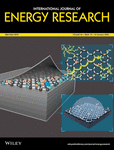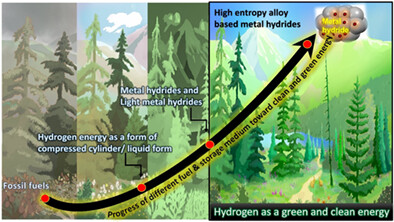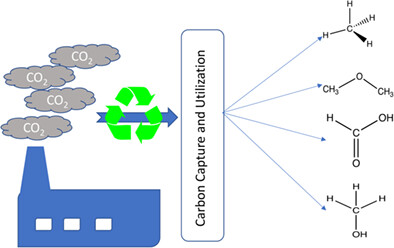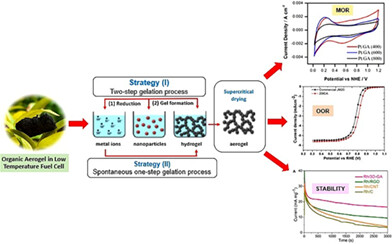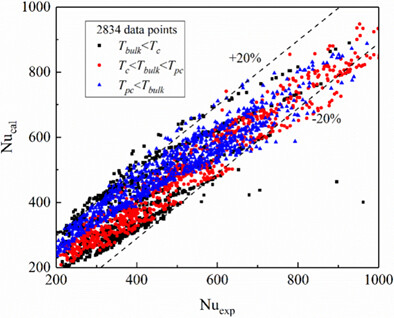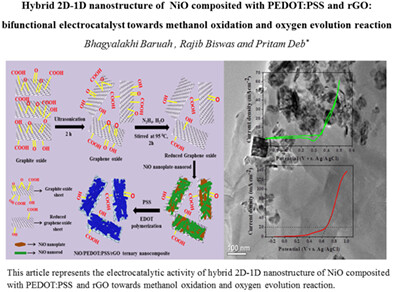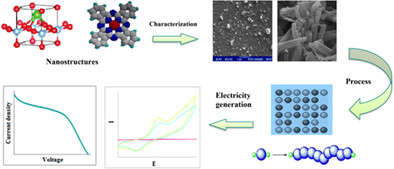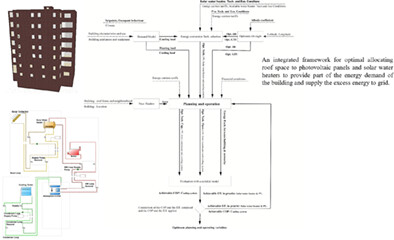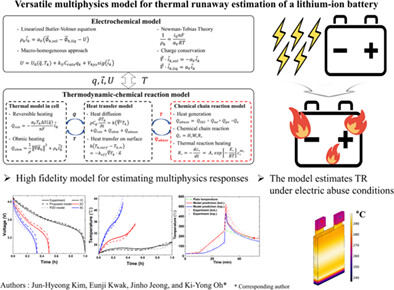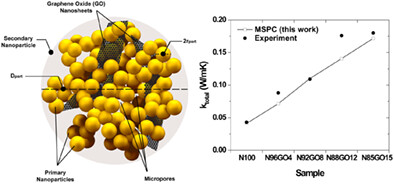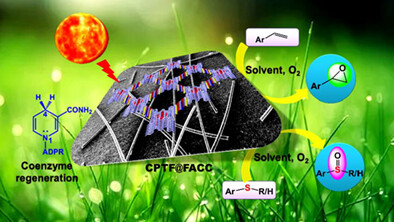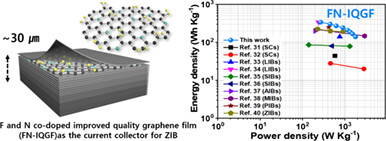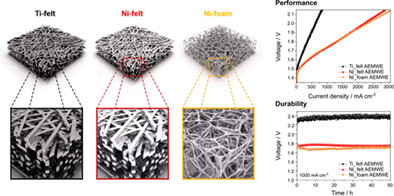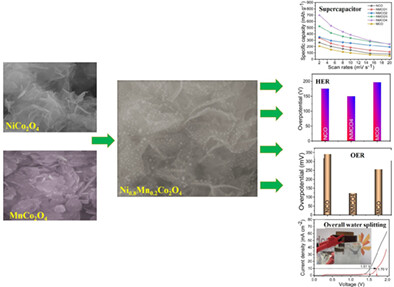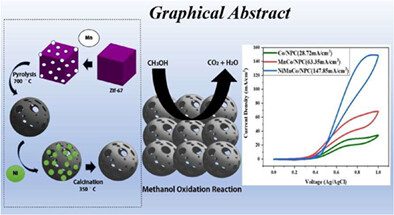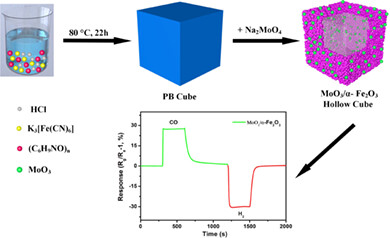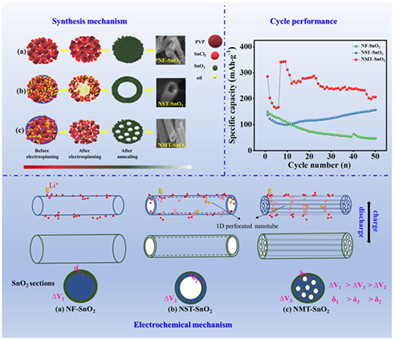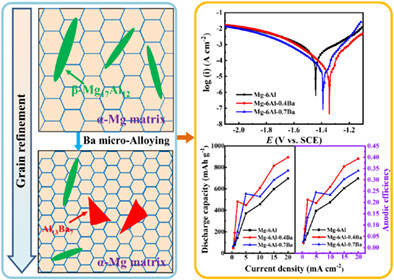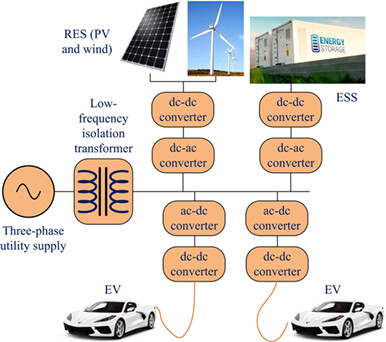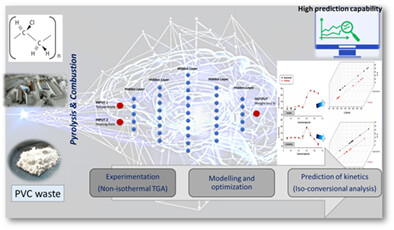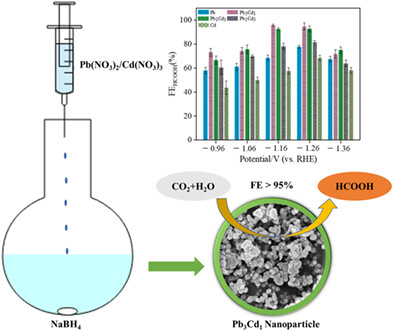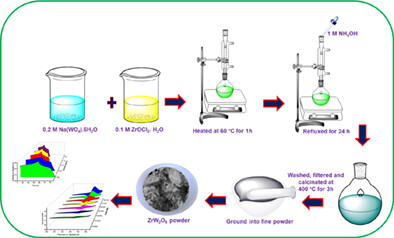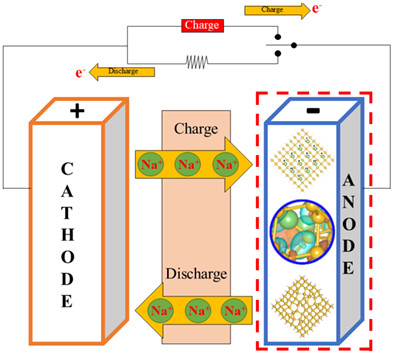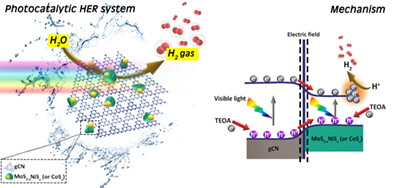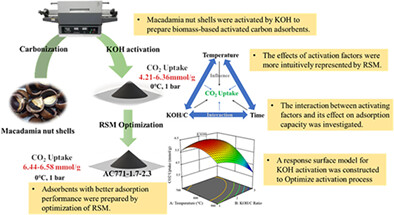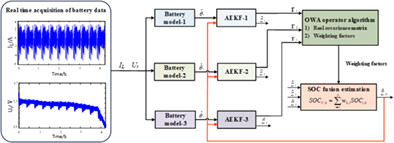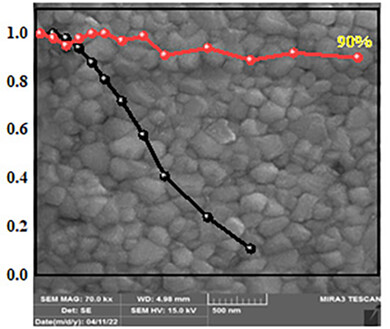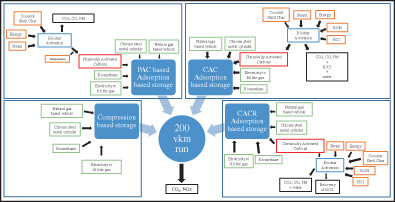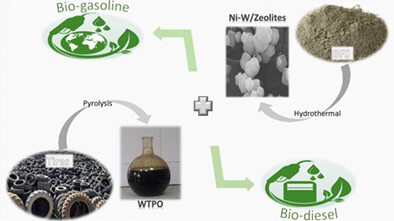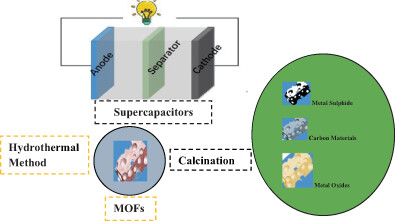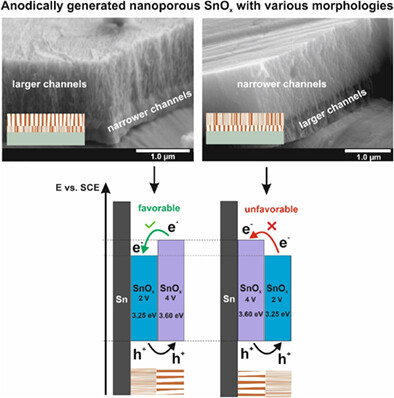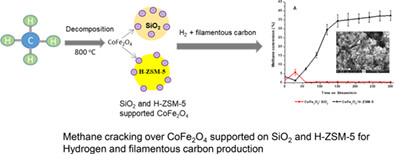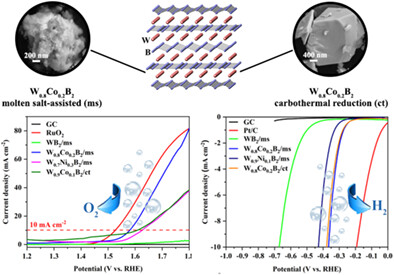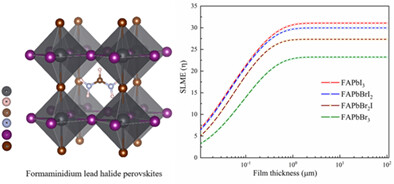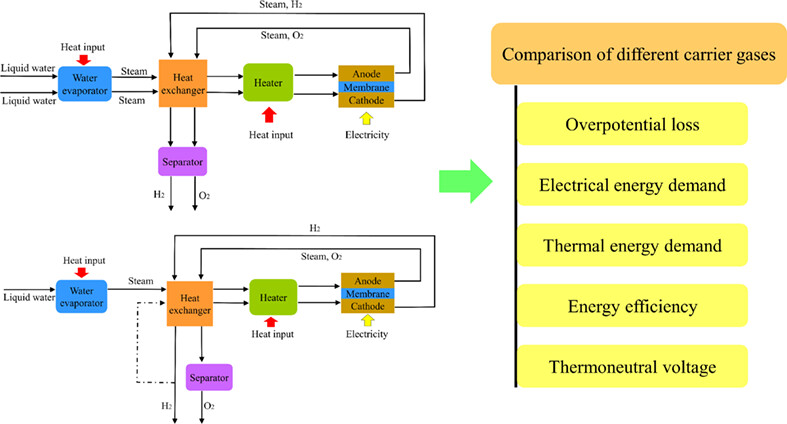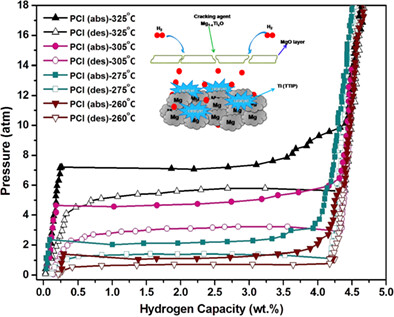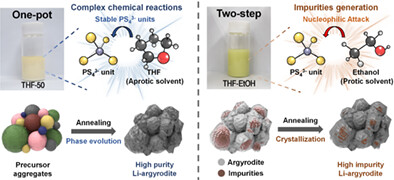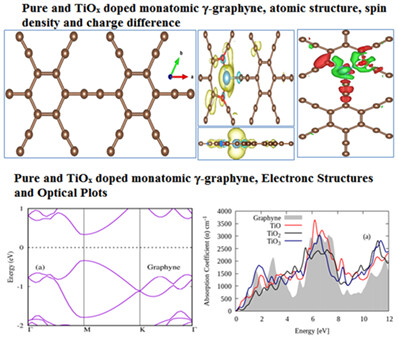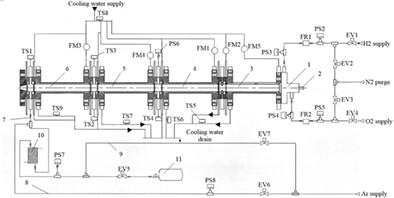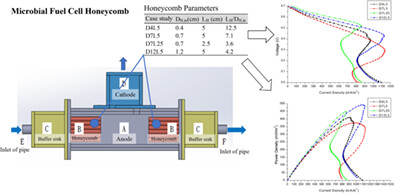Journal list menu
Export Citations
Download PDFs
Cover Image, Volume 46, Issue 12
- First Published: 15 September 2022
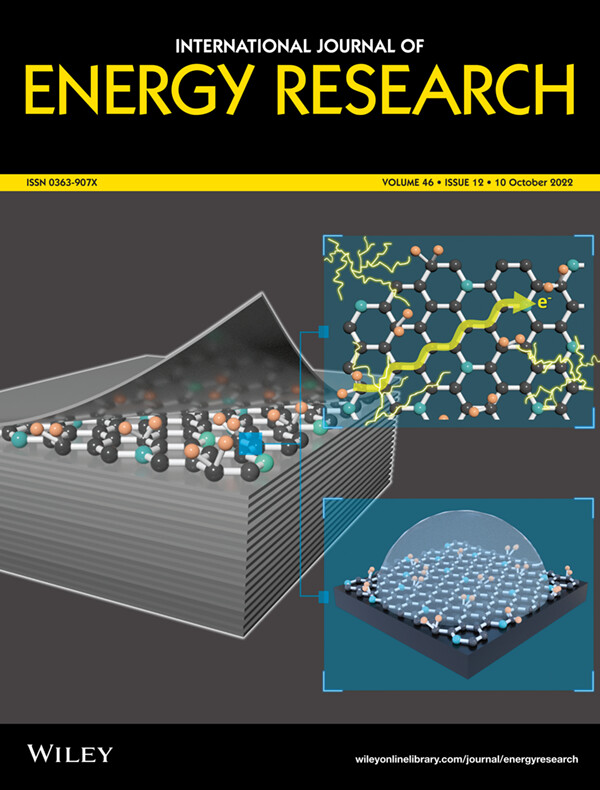
The cover image is based on the Research Article Zinc-ion battery based on heteroatom-doped improved-quality graphene film as a functional current collector by Seoyeong Kim and Geon-Hyoung An, https://doi.org/10.1002/er.8328.
Issue Information
- Pages: 16103-16108
- First Published: 15 September 2022
Hydrothermal carbonization processes applied to wet organic waste streams
- Pages: 16109-16126
- First Published: 29 June 2022
Transactive energy management for microgrids considering techno-economic perspectives of utility – a review
- Pages: 16127-16149
- First Published: 30 June 2022
A comprehensive review of the prospects for future hydrogen storage in materials-application and outstanding issues
- Pages: 16150-16177
- First Published: 18 July 2022
Recent biopolymers used for membrane fuel cells: Characterization analysis perspectives
- Pages: 16178-16207
- First Published: 08 July 2022
Review on thermal performance of heat exchanger using phase change material
- Pages: 16208-16240
- First Published: 18 July 2022
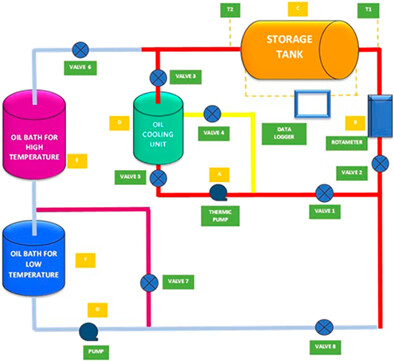
To know the different heat transfer enhancement methods in various types of heat exchangers using phasechange materials. To investigate different factors affecting charging and discharging rates of phase change materials in various PCM based heat exchangers. To study the role of metal foams, nano based phase change material and composite phase change material to improve the efficiency of a thermal energy storage system. To investigate the thermal performance of packed and cascaded heat exchangers. To study a novel kind of heat exchanger called Webbed Tube Heat Exchanger.
Recent developments in CO2 capture, utilization, related materials, and challenges
- Pages: 16241-16263
- First Published: 10 July 2022
Organic aerogel as electro-catalytic support in low-temperature fuel cell
- Pages: 16264-16280
- First Published: 19 July 2022
Progress of g-C3N4 and carbon-based material composite in fuel cell application
- Pages: 16281-16315
- First Published: 07 August 2022
Electrochemical hydrogen storage: Achievements, emerging trends, and perspectives
- Pages: 16316-16335
- First Published: 04 August 2022

Hydrogen, the lightest atom, is a promising alternative energy source to fossil fuels but its safe and efficient storage is a challenge. Solid-state electrochemical hydrogen storage is a promising method among hydrogen storage methods. A detailed review of approaches and materials for electrochemical hydrogen storage is presented.
Solar energy for sustainability in Africa: The challenges of socio-economic factors and technical complexities
- Pages: 16336-16354
- First Published: 22 July 2022
Dynamic characteristics of a shell and plate particle-SCO2 moving packed bed heat exchanger with various SCO2 channel configurations
- Pages: 16355-16374
- First Published: 15 December 2020
High-heat flux flow and heat transfer transitions in a supercritical loop: Numerical verification and correlation
- Pages: 16375-16393
- First Published: 29 March 2021
Hybrid 2D-1D nanostructure of NiO composited with PEDOT:PSS and rGO: Bifunctional electrocatalyst towards methanol oxidation and oxygen evolution reaction
- Pages: 16394-16415
- First Published: 01 July 2022
Designing of potential materials for solar-hydro electricity generation: Preparation of novel nano-structured films via thermodiffusion and polymerization methods
- Pages: 16416-16426
- First Published: 23 June 2022
A strong tracking adaptive fading-extended Kalman filter for the state of charge estimation of lithium-ion batteries
- Pages: 16427-16444
- First Published: 29 June 2022
Stochastic profit-based unit commitment problem considering renewable energy sources with battery storage systems and plug-in hybrid electric vehicles
- Pages: 16445-16460
- First Published: 04 July 2022
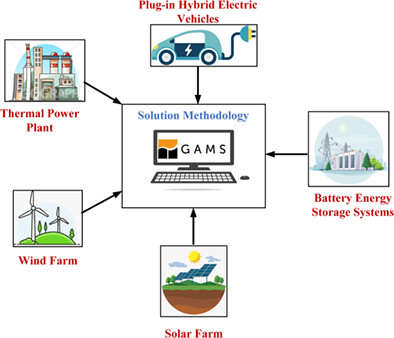
As the researchers in the past have not considered various different renewable sources such as wind, solar, battery energy storage systems, and PHEVs simultaneously in the formulation of stochastic profit-based unit commitment (SPBUC) problems, thus the key focus of the authors in this paper is to consider these power sources altogether in SPBUC problem. The quadratic cost characteristics of thermal units formulated in most of the research publications, may not represent large size thermal units with multiple input valves accurately. Valve point loading effect of thermal turbines has also been considered and successfully solved the SPBUC problem. Furthermore, it has been observed that the uncertainty in wind speed, solar irradiance and plug-in hybrid electric vehicles have been rarely considered while reviewing the literature. Therefore to deal with the uncertainties, Monte Carlo simulation technique has been successfully applied.
Potential of transuranics transmutation in a thorium-based chloride salt fast reactor
- Pages: 16461-16475
- First Published: 02 July 2022
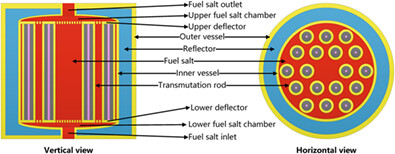
To improve transuranics (TRUs) transmutation performance, a thorium-based chloride salt fast reactor (TCLFR) for TRUs is proposed. TRUs transmutation potential is investigated and compared in three TCLFR cores (ThCore, GdCore, and TcCore) to the conventional molten chloride fast reactor (MCFR). The transmutation rates of the TcCore and GdCore are higher than those of the MCFR, while the ThCore is lower.
An integrated framework for optimum planning and operating solar energy conversion technologies in buildings
- Pages: 16476-16499
- First Published: 01 July 2022
Assessment on combustion performance and bottom ash properties of carbon-rich fraction from coal gasification fine slag co-combustion with corn straw char
- Pages: 16500-16511
- First Published: 01 July 2022
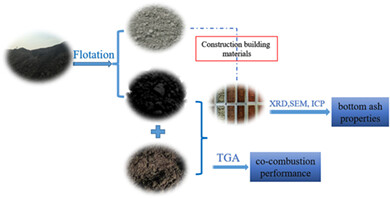
In our study, it is found that the ignition and burnout performance of the carbon-rich fraction are enhanced with the addition of corn straw char. Due to the different mixing ratios, the mineral composition of the bottom ash shows different changes. It can be observed that the ash sample with 40% mixing carbon-rich fraction proportion presents the most obvious agglomeration phenomenon. Besides, the bottom ash is rich in silicon, which can be extracted and reused. Moreover, the heavy metal contents in the bottom ash all meet the Chinese Standard of Soil Environmental Quality Risk Control Standard. The results obtained from this paper aim to guide the large-scale treatment of coal gasification fine slag in the Ningdong region, China. Additionally, the study could make a practical reference for the potential of coal gasification fine slag as energy recovery.
Sono-exfoliated graphene-like activated carbon from hazelnut shells for flexible supercapacitors
- Pages: 16512-16537
- First Published: 05 July 2022
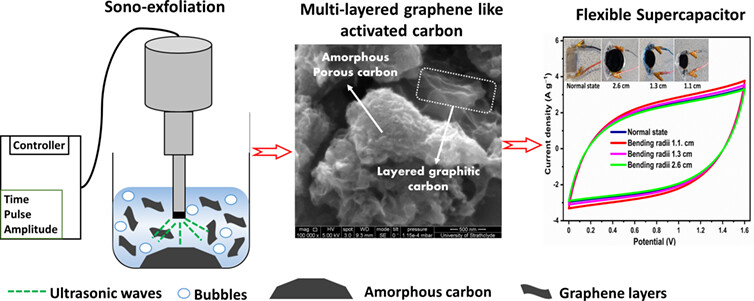
High surface area multi-layered graphene like activated carbon was synthesized from hazelnut shell activated carbon using simple and scalable sono-exfoliation process. Flexible supercapacitors were fabricated using sono-exfoliated multi-layered graphene like activated carbon and bio-polymer electrolyte. High surface area with graphene like morphology enhances the electrochemical performance. The fabricated flexible supercapacitors displayed high energy density of 38.7 Wh kg−1 at power densities of 198.4 W kg−1 with excellent flexibility over different bending radii.
Thermal-hydraulic analysis of wire-wrapped rod bundle in lead-based fast reactor with non-uniform heat flux
- Pages: 16538-16549
- First Published: 28 June 2022
Versatile multiphysics model for thermal runaway estimation of a lithium-ion battery
- Pages: 16550-16575
- First Published: 03 July 2022
Redox flow battery time-varying parameter estimation based on high-order sliding mode differentiators
- Pages: 16576-16592
- First Published: 05 July 2022
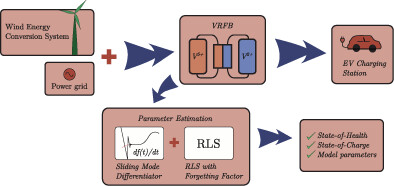
A new insight into vanadium redox flow batteries (VRFB) parameter estimation is presented. Driven by the electric vehicles proliferation, a hybrid fast charging station with grid and renewable energy connection is particularly considered. In this stationary application, the VRFB is operating as buffering module.
Photovoltaic modules degradation assessment using different statistical techniques
- Pages: 16593-16607
- First Published: 06 July 2022
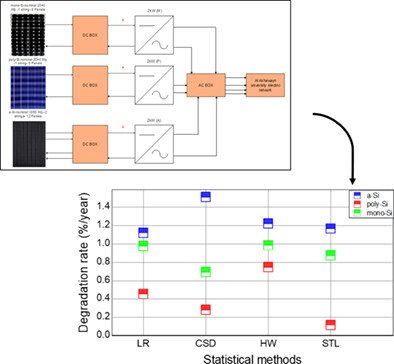
The novelty of this work is to assess the annual degradation rate of three silicon-based PV modules by employing different statistical techniques namely linear regression, classical seasonal decomposition, holt-winters', and seasonal and trend-decomposition using loess. The aim of this work is to compare the degradation rates obtained using four methods and determine the most accurate one.
Analytical effective thermal conductivity model for colloidal porous composites and nanocomposites based on novolac/graphene oxide aerogels
- Pages: 16608-16628
- First Published: 30 June 2022
Sensitivity analysis and selectivity optimization of Fischer-Tropsch reaction over a Fe-Co bimetallic nanocatalyst
- Pages: 16629-16642
- First Published: 06 July 2022

- Comprehensive and statistical models were developed to describe the behaviors of the catalyst system using RSM methodology.
- The effect of operating condition and their interactions on the selectivity of products was investigated with statistical approaches.
- The optimization technique was investigated to generate desirable products.
Solar light-assisted rod-shaped CPTF@FACC photocatalyst: An efficient platform for oxygenation reactions and coenzymes regeneration
- Pages: 16643-16657
- First Published: 19 July 2022
Zinc-ion battery based on heteroatom-doped improved-quality graphene film as a functional current collector
- Pages: 16658-16669
- First Published: 01 July 2022
Effect of pore structures in nickel-based porous transport layers for high-performance and durable anion-exchange membrane water electrolysis
- Pages: 16670-16678
- First Published: 01 July 2022
Performance investigation of a system hybridizing dye-sensitized solar cell with thermoelectric devices for power and cooling
- Pages: 16679-16692
- First Published: 05 July 2022
Bifunctional nanoparticles decorated Ni1-xMnxCo2O4 ultrathin nanoflakes-like electrodes for supercapacitor and overall water splitting
- Pages: 16693-16715
- First Published: 26 July 2022
State of charge estimation of supercapacitors based on multi-innovation unscented Kalman filter under a wide temperature range
- Pages: 16716-16735
- First Published: 05 July 2022
ZIF-67 derived ternary NiMnCo-based nanoporous carbon material for methanol oxidation reaction
- Pages: 16736-16750
- First Published: 05 July 2022
Adjustable p-n transition behavior based on MoO3-decorated hollow α-Fe2O3 for highly hydrogen-selective sensors
- Pages: 16751-16761
- First Published: 05 July 2022
Experimental investigation of a stepped solar still employing a phase change material, a conical tank, and a solar dish
- Pages: 16762-16776
- First Published: 18 July 2022
Enhancement effects of the side blockage arrangement in the flow channel on the performance of a proton exchange membrane fuel cell
- Pages: 16777-16790
- First Published: 05 July 2022
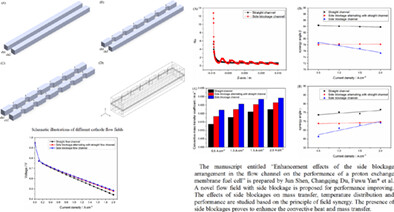
The manuscript entitled “Enhancement effects of the side blockage arrangement in the flow channel on the performance of a proton exchange membrane fuel cell” is prepared by Jun Shen, Changqing Du, Fuwu Yan* et al. A novel flow field with side blockage is proposed for performance improving. The effects of side blockages on mass transfer, temperature distribution and performance are studied based on the principle of field synergy. The presence of side blockages proves to enhance the convective heat and mass transfer.
Conjugated oxazole-based interfacial materials for efficient and stable inverted polymer solar cell with an efficiency of 16.52%
- Pages: 16791-16798
- First Published: 05 July 2022

In order to improve efficiency and stability of non-fullerene acceptor based PSCs, we have used three commercially available and inexpensive materials, E1, E2, and E3, as interlayer between zinc oxide and active layer in inverted OSCs. The new interlayer materials enhance the carrier injection/extraction properties and thus the PSCs exhibited an improved JSC of 27.18 mA/cm2 and PCE of 16.52%. The new interlayer, E3 in particular, forms a well-aligned cascade energy levels between the active layer and zinc oxide layer. This cascading energy levels reduce the energy barrier for electron injection and collection at the interface. The devices also exhibited improved device stability under continuous illumination, annealing and high humidity.
Nanotube SnO2 cathodes constructed by electrospinning for high-performance hybrid Mg/Li ion batteries—Feasible modification strategy for superior cycle performance
- Pages: 16799-16809
- First Published: 06 July 2022
Catalytic methane decomposition to hydrogen and carbon over hydrotalcite-derivative composition-uniform and sintering-resistant Ni-Fe/Al2O3 alloy catalysts
- Pages: 16810-16822
- First Published: 11 August 2022
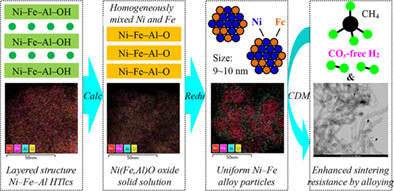
Ni-Fe-Al hydrotalcite-like compounds are a good precursor for the preparation of Ni-Fe alloy catalysts. Upon calcination and reduction, Ni-Fe-Al HTlcs are transferred to Ni(Fe,Al)O solid solution and the homogeneously mixed nickel and iron species are co-reduced to yield composition-uniform and well-dispersed alloy particles. The Ni-Fe/Al2O3 alloy catalysts exhibit higher carbon yield in methane decomposition than the Fe-free Ni counterpart, with the optimal composition being Ni:Fe = 4:1. Moreover, Ni-Fe alloying enhances the sintering resistance, leading to a decrease in the carbon diameter.
KOH mediated hydrothermally synthesized hexagonal-CoMn2O4 for energy storage supercapacitor applications
- Pages: 16823-16838
- First Published: 02 July 2022
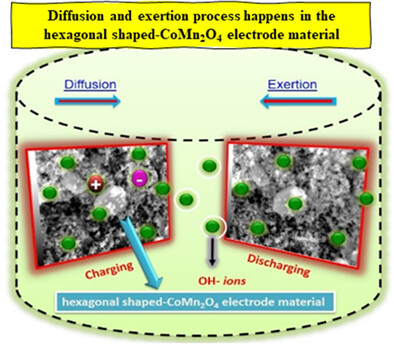
The novel hexagonal-like CoMn2O4 electrode material was synthesized via a facile hydrothermal method.
The synthesized material had a maximum specific capacitance of 638.8 F/g at 5 mV/s in a 2 M KOH electrolyte.
Electrode material achieved maximum columbic efficiency of 81% and retained 85% of its capacitance after 4000 cycles.
This suggests that the CoMn2O4 material could be used in advanced supercapacitor and energy storage applications.
Hydrogen production optimization from methanol partial oxidation via ultrasonic sprays using response surface methodology and analysis of variance
- Pages: 16839-16853
- First Published: 11 July 2022
Noticeable improvement in morphological characteristics and thermal reliability of n-octadecane@SiO2 nanocapsules for thermal energy storage
- Pages: 16854-16869
- First Published: 05 July 2022
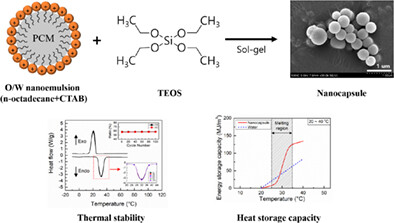
The morphological characteristics and the thermal reliability of n-octadecane@SiO2 nanocapsule was noticeably improved by optimizing various synthesis parameters in this study. The encapsulation ratio was enhanced up to 54.0%, and the encapsulation efficiency was varied less than 1% during 100 thermal cycles. The heat storage capacity of the synthesized nanocapsule was 59.5% larger than that of water in 20oC temperature difference.
Influence of Ba micro-alloying on electrochemical and discharge behaviors of Mg-Al anodes for mg-air primary battery
- Pages: 16870-16882
- First Published: 06 July 2022
Synthesis and electrochemical properties of nickel sulfide/carbon composite as anode material for lithium-ion and sodium-ion batteries
- Pages: 16883-16895
- First Published: 17 July 2022
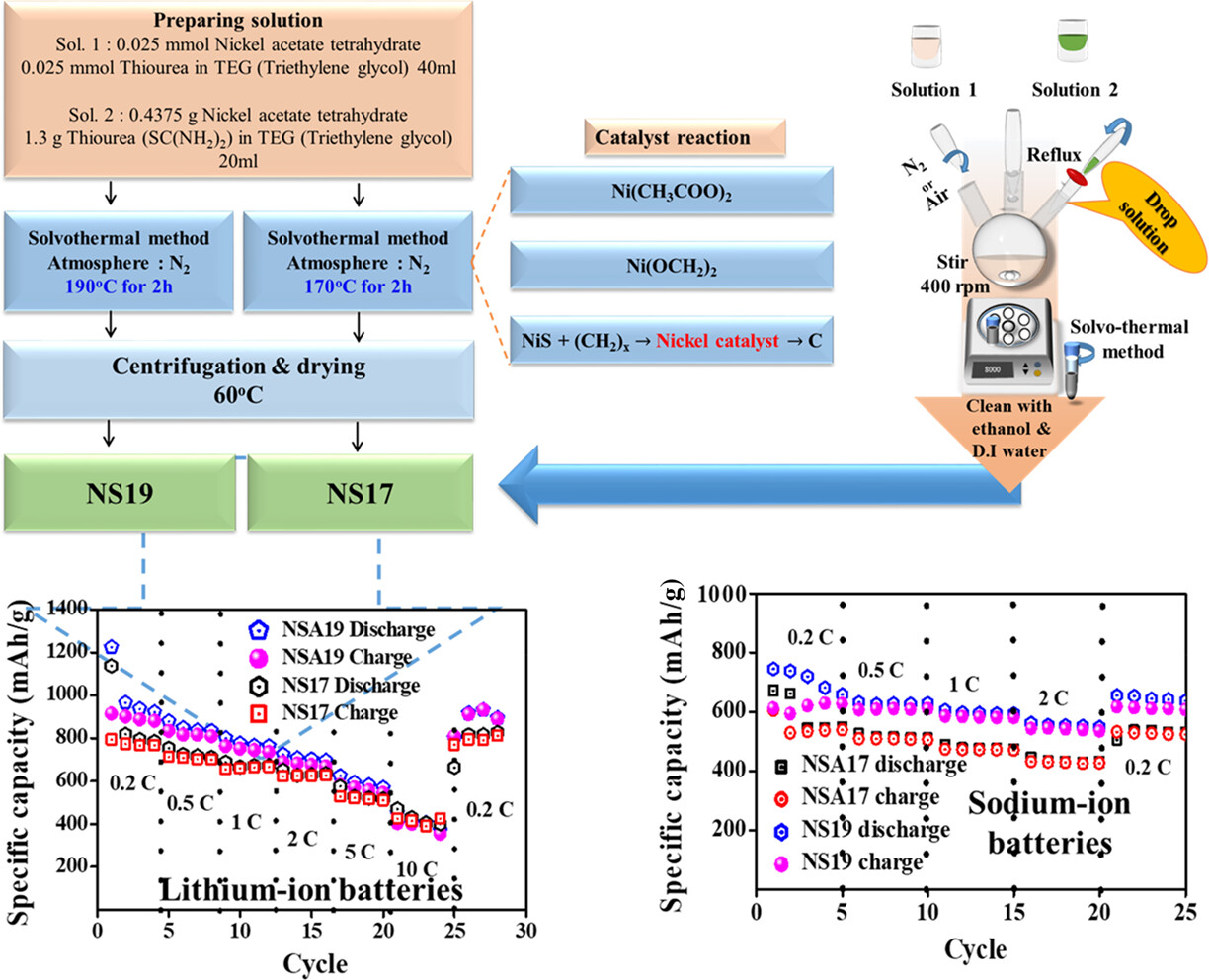
Transition metal sulfides have been considered a novel anode material for lithium-ion and sodium-ion batteries (LIBs/SIBs). However, their practical applications have been limited by their relatively poor cyclic stabilities and low rate performances. This work synthesized carbon-coated nickel sulfide (NiS) composites with a core-shell structure for high-performance LIBs and SIBs by a solvothermal method.
Integration of multi voltages, multi electric vehicle spots based three phase photovoltaic array charging station to the modern distribution grid with improved electric vehicle charging capability and power quality
- Pages: 16896-16917
- First Published: 29 July 2022
Plasticizer for controlling single-walled carbon nanotube fibers and zincophilic sites of microfiber supercapacitor
- Pages: 16918-16928
- First Published: 10 July 2022
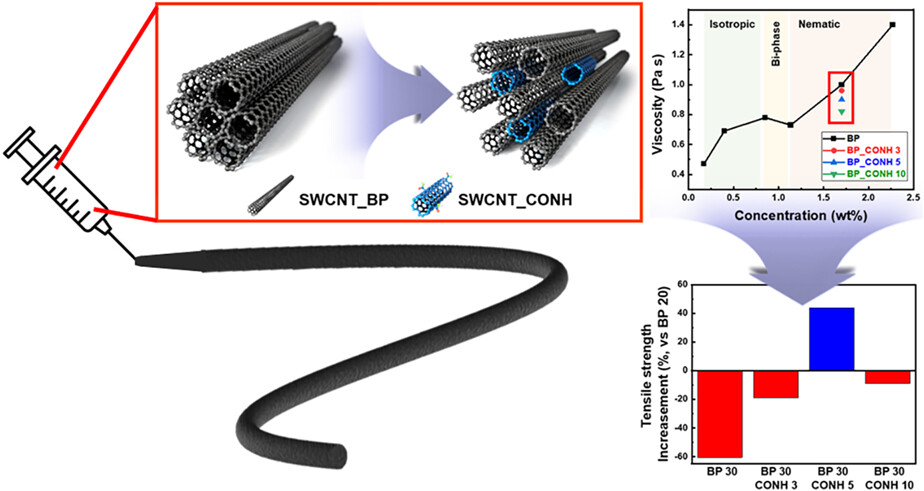
Here, we report Tris(hydroxymethyl)aminomethane (THA)-functionalization to single-walled carbon nanotubes (SWCNTs) that control the viscosity of the liquid crystal SWCNTs phases for fiber spinning. Enhancement in the free volume of individual SWCNTs affected the formation of nematic liquid crystal phases. The spunned SWCNT fiber with plasticizer exhibited noticeably higher mechanical properties (tensile strength, 1.44 GPa and tensile modulus, 169 GPa) with higher electrical conductivity (1899 S m2/kg). Also, the SWCNT fiber was suitable for zinc-ion supercapacitor from nitrogen functional group for zincophilic site.
Experimental validation of off-board EV charging station with reduced active switch count
- Pages: 16929-16948
- First Published: 14 July 2022
Structural and electrical study of nanocomposite Fe0.2Ni00.3Cu0.5 anode with effect of graphene oxide (GO) for low-temperature SOFCs
- Pages: 16949-16958
- First Published: 16 July 2022
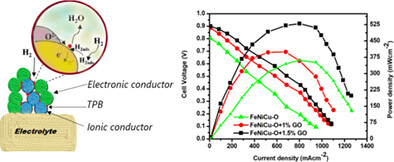
The Fe0.2Ni0.3Cu0.5 (FNC) oxide anode synthesized and graphene oxide (GO) has been incorporated in FCN composite to investigate the effect on conductivity and performance for solid oxide fuel cell working on low temperature. The maximum conductivity and performance have been achieved 43 S/cm and 529 mW/cm2, respectively. The obtained results of GO incorporation are higher than that of pure FNC oxide materials. It can be argued that the use of GO in optimized anode materials can dramatically support to reduce the operating temperature of solid oxide fuel cell.
A combined phenomenological artificial neural network approach for determination of pyrolysis and combustion kinetics of polyvinyl chloride
- Pages: 16959-16978
- First Published: 26 July 2022
CuS-enhanced light-absorbing washable solar evaporator based on polydopamine-cotton fabric for efficient water purification
- Pages: 16979-16990
- First Published: 10 July 2022
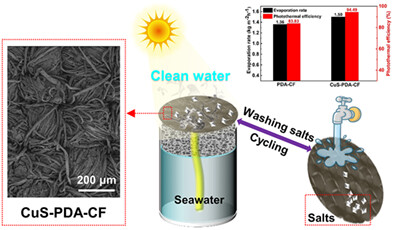
Novelty statement
A flexible solar evaporator CuS-PDA-CF was exploited by a simple self-assembled method. CuS-PDA-CF with the washable characteristic, which can be renewed the photothermal performance by washing off the deposited salts. Due to the synergistic effect of CuS and PDA, the photothermal conversion efficiency of CuS-PDA-CF is improved to 94.49% with a water evaporation rate of 1.50 kg m−2 h−1 under 1-sun illumination. Moreover, CuS-PDA-CF can effectively purify seawater, heavy metal wastewater, and dyeing wastewater.
Decorating Cu2O photocathode with cu/Al bimetallic layer for enhanced photoelectrochemical water splitting
- Pages: 16991-17002
- First Published: 11 July 2022
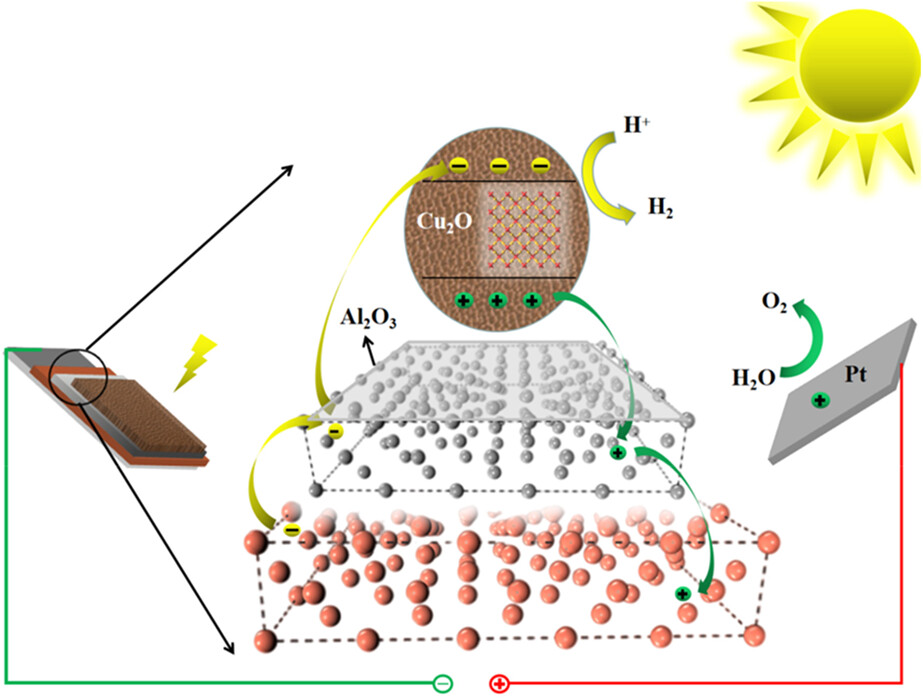
Cu/Al/Cu2O composites for photoelectrochemical water-splitting was synthesized by a simple method. The Cu/Al layer that has surface plasmon resonance effect inherits both properties of which Cu has high conductivity to accelerate the transfer of photoinduced electron-hole pairs and Al could form thin Al2O3 layer to inhibit the recombination of carriers. With the synergistic effect of Cu and Al, Cu/Al/Cu2O displays a higher PEC performance.
Microbially catalyzed enhanced bioelectrochemical performance using covalent organic framework-modified anode in a microbial fuel cell
- Pages: 17003-17014
- First Published: 15 July 2022
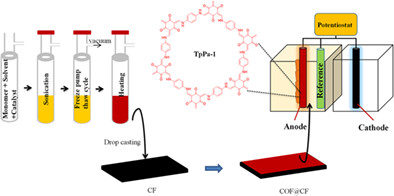
- A stable TpPa-1@CF anode was fabricated using a solvothermal and drop-casting method.
- TpPa-1@CF considerably improved both the electrochemical activity and cell performance.
- The TpPa-1@CF anode generated 4.3 times the power density than that of the uncoated electrode.
- Stable and improved current density was observed for all five MFC cycles.
- Biofilm was enriched with electroactive microorganisms of Proteobacteria and Bacteroidetes.
Facile synthesis and composition-tuning of bimetallic PbCd nanoparticles as superior CO2-to-HCOOH electrocatalysts
- Pages: 17015-17028
- First Published: 11 July 2022
Enhancement of electron mobility and thermoelectric power factor of cobalt-doped n-type Bi2Te3
- Pages: 17029-17042
- First Published: 11 July 2022
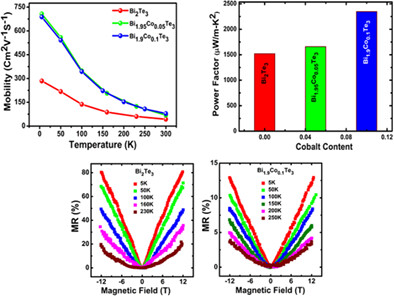
This paper investigates the thermoelectric, magnetization, and magneto-transport properties of Cobalt doped n-type Bi2Te3 sample. Cobalt (Co) doping enhances the mobility and power factor of pristine Bi2Te3. Around 47% improvement of power factor in Bi1.9Co0.1Te3 sample is observed. Linear positive magnetoresistance confirms that the topological surface state is intact with Co doping.
Impact of oxygen-defects induced electrochemical properties of three-dimensional flower-like CoMoO4 nanoarchitecture for supercapacitor applications
- Pages: 17043-17055
- First Published: 10 July 2022
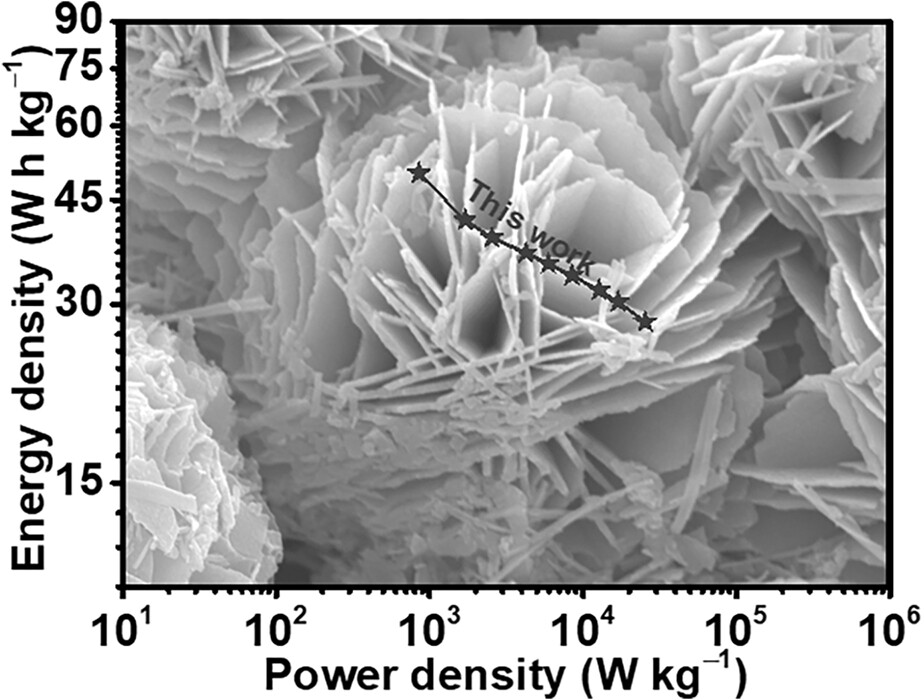
The ration design and preparation of oxygen-defect rich well-defined three-dimensional flower-like CoMoO4 (rCMO) nanomaterial have attracted as promising electrode materials for supercapacitor applications. The rCMO nanomaterial significantly increased the electronic conductivity and impressive capacitive performance due to synergistic effects of well-order nanoarchitecture and rich oxygen-defects. Interestingly, the fabricated rCMO nanoflower electrode material presents a considerable specific capacity of 531 mAh g−1 at a current density of 1 A g−1, which is higher than that of pristine CMO of 322 mAh g−1. Furthermore, the designed HSC of rCMO//AC also afforded an excellent energy density of 49.87 Wh kg−1 at a power density of 845.45 kW kg−1 with an impressive long-term cyclic lifetime.
Multicomponent doped hierarchically porous carbon derived from natural polyelectrolyte for high-performance supercapacitors
- Pages: 17056-17067
- First Published: 15 July 2022
Computational investigation of auto-thermal reforming process of diesel for production of hydrogen for PEM fuel cell applications
- Pages: 17068-17083
- First Published: 25 July 2022
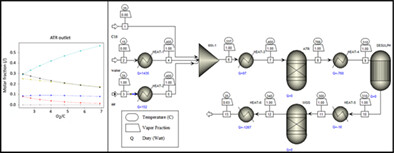
Computational investigation of small scale catalytic auto-thermal reforming with water gas shift for production of hydrogen from liquid hydrocarbon fuels was carried out. The considered process is suitable for use in mobile applications. Thermodynamic and kinetic models were considered. Process scheme for autothermal reforming of diesel constructed in ASPEN Plus with the representation of influence of O2/carbon ratio on the outlet composition is shown. H2O - light blue, N2 - black, H2 yellow, CO2
A flexible fiber-shaped hybrid cell with a photoactive gel electrolyte for concurrent solar energy harvesting and charge storage
- Pages: 17084-17095
- First Published: 12 July 2022
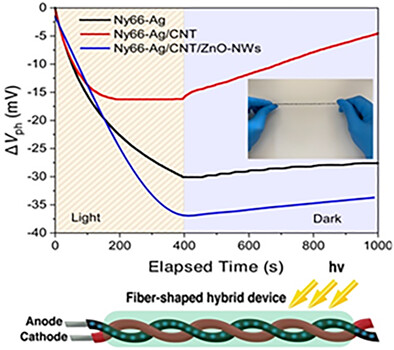
In this article, a dual-function PANI-based gel electrolyte is proposed for fiber-shaped hybrid devices with a twisted structure and a simple fabrication strategy. By utilizing CNT as a porous layer and then ZnO nanowires as the electron transport layer on the anode electrode, the energy storage and photovoltaic performance are improved respectively.
Battery hysteresis compensation modeling and state-of-charge estimation adaptive to time-varying ambient temperature conditions
- Pages: 17096-17112
- First Published: 13 July 2022
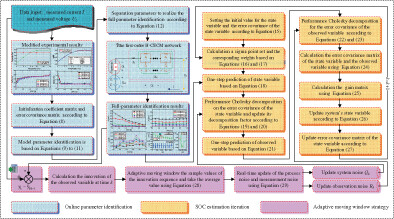
- A hysteresis-compensated electrical characteristic model is established for terminal voltage tracking.
- An autoregressive exogenous model with multi-feature coupling is employed for parameter identification.
- An adaptive moving window-square root unscented Kalman filter is proposed for SOC estimation.
- The proposed method is adaptive to uncertainties in temperature and cell hysteretic effects.
Facile synthesis of platelet-like zirconium tungstate nanostructures for high-performance supercapacitors
- Pages: 17113-17125
- First Published: 16 July 2022
3D two-phase and non-isothermal modeling for PEM water electrolyzer: Heat and mass transfer characteristic investigation
- Pages: 17126-17143
- First Published: 12 July 2022
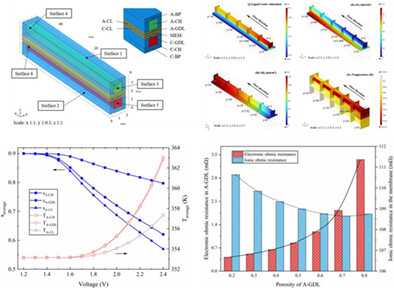
The manuscript entitled “3D two-phase and non-isothermal modeling for PEM water electrolyzer: Heat and mass transfer characteristic investigation” is prepared by Haoran Zhou, Kai Meng, Wenshang Chen, Ben Chen. A three-dimensional, two-phase, non-isothermal proton exchange membrane (PEM) water electrolyzer model was developed, aiming to reveal water and heat distribution characteristics and to explore the effects of various parameters on heat and mass transfer and performance of the electrolyzer. The results show that the electrolyzer performance depends on the combined effect of heat and mass, especially at high voltages. Decreasing the inlet velocity and increasing its inlet temperature, decreasing the contact angle of A-GDL and properly increasing its porosity, and decreasing the thickness of membrane are all beneficial to improve the performance of PEM water electrolyzer.
On-line characterization of PEM's oxygen permeability for PEM fuel cell by embedded microelectrode method
- Pages: 17144-17150
- First Published: 14 July 2022
Tunable electronic properties of silicon nanowires as sodium-battery anodes
- Pages: 17151-17162
- First Published: 15 July 2022
Electrochemical synthesis of MnO2/NiO/ZnO trijunction coated stainless steel substrate as a supercapacitor electrode and cyclic voltammetry behavior modeling using artificial neural network
- Pages: 17163-17179
- First Published: 13 July 2022
Atomic layer deposited Pt/Cu bimetallic catalysts for use in high-performance fuel cell cathodes
- Pages: 17180-17188
- First Published: 12 July 2022
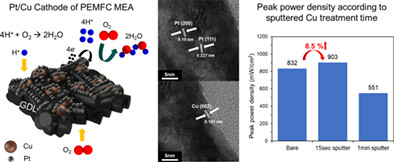
In this study, ALD Pt/Cu bimetal catalyst for high-performance FC cathode was studied. When sputtered Co 15 s was treated, the performance was improved by 8.5% compared to the untreated sample. This may be because the electron energy changed to favor ORR when Pt and Cu bond. In addition, the use of Cu interfered with Pt surface adsorption and deactivation of oxygen species such as OH, thereby increasing the number of catalytically active sites.
Transition metal (Ni, co)-doped graphitic carbon nitride/MoS2 heterojunctions as efficient photocatalysts for hydrogen evolution reaction under visible light
- Pages: 17189-17203
- First Published: 12 July 2022
Influence of the interaction between activation conditions on the pore structure and CO2 uptake of the prepared macadamia nutshell-based activated carbon
- Pages: 17204-17219
- First Published: 13 July 2022
Nanostructured metal-doped Prussian blue thin film electrodes for efficient and stable electrochromic supercapacitors
- Pages: 17220-17229
- First Published: 16 July 2022

The combined features of functional electronic devices have attracted significant attention because of high demand for promising energy technologies. Of particular interest are electrochromic (EC) supercapacitors, which can visually display the level of stored energy in real-time. Here, we demonstrate the EC energy storage properties of pure and doped Prussian blue (PB) thin films fabricated using electrodeposition.
Analyses of the shutdown system and transients scenarios for the dual fluid reactor concept with metallic molten fuel
- Pages: 17230-17246
- First Published: 21 July 2022
Experimental study on the hybrid carbon based phase change materials for thermal management performance of lithium-ion battery module
- Pages: 17247-17261
- First Published: 29 July 2022
Hydrogen evolution mechanism for Mg-H2O reaction in metal sulfate solutions and its application
- Pages: 17262-17272
- First Published: 12 July 2022
A multi-model real covariance-based battery state-of-charge fusion estimation method for electric vehicles using ordered weighted averaging operator
- Pages: 17273-17284
- First Published: 13 July 2022
Polyaniline/Nickle oxide hole transport layers to increase stability and efficiency of regular perovskite solar cells
- Pages: 17285-17294
- First Published: 15 July 2022
Comprehensive assessment of the Calotropis procera natural dye extracts with weather effects for photovoltaic solar cell manufacturing
- Pages: 17295-17307
- First Published: 15 July 2022
Multi-objective quantum atom search optimization algorithm for electric vehicle charging station planning
- Pages: 17308-17331
- First Published: 27 July 2022
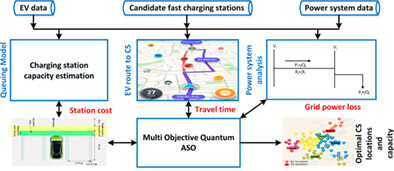
In this study, a multi-objective binary version of the atom search optimization algorithm (ASO) is proposed for handling the electric vehicle charging station (CS) location problem. The method integrates quantum operators to binarize the algorithm and achieve a higher convergence rate than the existing binary ASO algorithm. Also, the non-dominated sorting and pareto concepts are infused to optimize the multi-objectives of travel time, CS costs, and power loss. The experimental findings demonstrate that the algorithm is well suited for solving CS placement problems.
Enhancing anion conduction stability of quaternized poly(phenylene) oxide-based anion exchange membranes with ionic liquids modified carbon nanomaterials
- Pages: 17332-17345
- First Published: 23 July 2022
Optimizing vanadium redox flow battery system power loss using particle swarm optimization technique under different operating conditions
- Pages: 17346-17361
- First Published: 19 July 2022
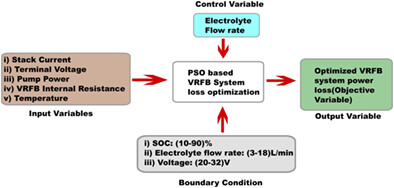
- This work represents a PSO-based multi-variable optimization of VRFB storage system power loss for the first time.
- A combined optimization of VRFB pump power and VRFB stack power has been done under different charge-discharge conditions.
- The work has been validated by a practical 1 kW 6 kWh VRFB system operation, thus indicating its optimized interfacing with scalable power system applications.
Life cycle assessment as a comparison tool for activated carbon preparations and biomethane storage for vehicular applications
- Pages: 17362-17375
- First Published: 18 July 2022
Bio-fuels production through waste tires pyrolytic oil upgrading over Ni-W/zeolite composites derived from blast furnace slag
- Pages: 17376-17390
- First Published: 20 July 2022
Superficial modification of polyamide-66 film for enhanced electrical performance and multimode functional triboelectric nanogenerators
- Pages: 17391-17403
- First Published: 26 July 2022
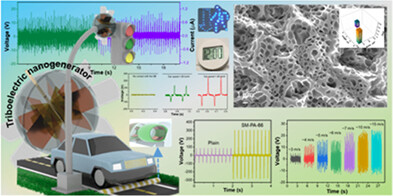
Hybridized surface modifications are prepared on the polyamide film, which efficiently harvests mechanical energy in various triboelectric nanogenerator (TENG) operational modes. Various TENGs operating under different operation modes were fabricated to efficiently harvest wind and vehicle motion energies. The TENG had a stable electrical performance under various environmental conditions and produced high electrical output. The real-time applications of TENGs are unveiled by harvesting wind and vehicle motion energies to power portable electronics and track real-time vehicle motion and acceleration.
Investigation of copper/cobalt MOFs nanocomposite as an electrode material in supercapacitors
- Pages: 17404-17415
- First Published: 17 July 2022
Preliminary lightweight core design analysis of a micro-transportable gas-cooled thermal reactor
- Pages: 17416-17428
- First Published: 15 July 2022
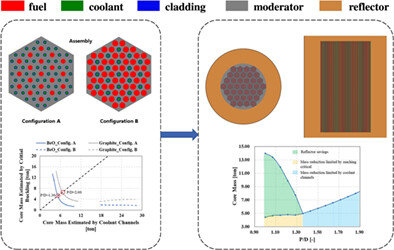
Neutronic core design analysis is discussed for a micro-transportable thermal reactor cooled by He-Xe mixture. An assembly configuration is determined by comparing the estimated core weight of different geometry and material. The utilization of pure beryllium reflector yields a compact design with a core weight of 8.06 metric tons. Analysis of neutronic characteristics reveal that the proposed design can operate for over 10 years without refueling and adequate shutdown margin is guaranteed using reflector sliders as reactivity control means.
Study on hydrogen production of sewage sludge/corncob using chemical looping with Cu-Fe as oxygen carrier
- Pages: 17429-17440
- First Published: 25 July 2022
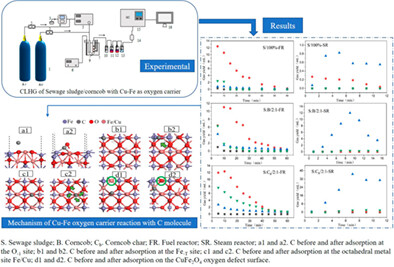
A vertical fixed-bed quartz reactor was heated by an electric furnace was used for the CLHG experiments. Three kinds of fuel are selected: air-dried sewage sludge, corncob, and corncob char prepared at 650 °C. Using a wet impregnation technique, a Cu-Fe bimetallic oxygen carrier was synthesized. Because of the high volatile content of the sewage sludge and corncob fuel mixture, a large number of reducing gases were produced early in the FR reaction. The carbon capture rate of OC reduces due to the quick release rate of volatiles and insufficient residence time in the reaction zone. When the mixture of sewage sludge and corncob char was used as fuel, the O2 from CuO and CuFe2O4 promoted the ring-opening dehydrogenation of aromatics in the char and produced large amounts of CO. C molecules directly adsorbed with some lattice O on the perfect surface of CuFe2O4 (100) to form CO, requiring less energy. The adjacent activation of oxygen ions was facilitated by C's interaction with metal ions on the surface of OC at the same time. The adsorption of C and OC was improved, the inner O migrated to the surface, and the rate of oxygen removal was sped up when oxygen holes developed on the surface of OC.
Effect of uncertainty in sorbent characteristic on techno-economic feasibility of carbonate looping for decarbonisation of coal-fired power plant
- Pages: 17441-17454
- First Published: 19 July 2022
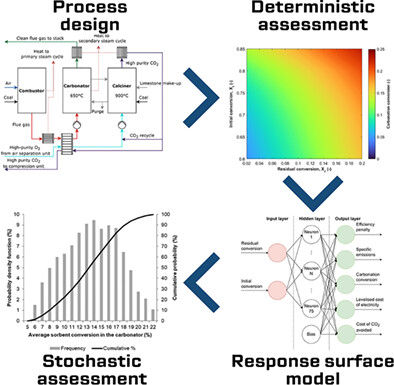
Correlations used to represent sorbent performance in carbonate looping include fitting parameters based on experimental data that is, in turn, associated with ±20% measurement error. A stochastic approach was employed to quantify the impact of such uncertainty in sorbent characteristics on the techno-economic performance of a carbonate retrofit. The estimated CO2 avoided cost was between 29.74 and 46.50 €/tCO2, with a median of 35.94 €/tCO2. Such a figure was higher than that obtained in the deterministic assessment (32.40 €/tCO2). This study revealed that the uncertainty in the sorbent characteristic would influence the techno-economic viability of the carbonate looping retrofits.
Thermoelectric performance of multiphase GeSe-CuSe composites prepared by hydrogen decrepitation method
- Pages: 17455-17464
- First Published: 20 July 2022
Improving the photoelectrochemical performance of porous anodic SnOx films by adjusting electrosynthesis conditions
- Pages: 17465-17477
- First Published: 24 July 2022
Thermal conductivity and viscosity of Al2O3-ZnO-MWCNT-EG ternary nanofluid
- Pages: 17478-17496
- First Published: 22 July 2022
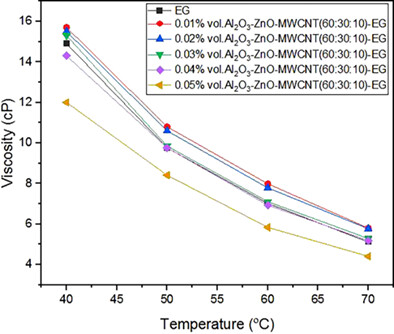
- Thermophysical properties along with the stability of nanofluid is of paramount importance in heat transfer applications.
- In the present work a ternary nanofluid of Al2O3-ZnO-MWCNT-EGfor a volume concentration of 0.01%-0.05%is experimentally studied for its thermal conductivity and viscosity.
- An enhancement in thermal conductivity of 26.6% at 25°C along with a reduction in viscosity of 19.46% at 40°C was observed for maximum volume concentration of 0.05%.
Facile modification of cobalt ferrite by SiO2 and H-ZSM-5 support for hydrogen and filamentous carbon production from methane decomposition
- Pages: 17497-17510
- First Published: 20 July 2022
Precursor-driven facile densification of Gd0.1Ce0.9O2−δ interlayer for high-performance solid oxide fuel cells
- Pages: 17511-17520
- First Published: 22 July 2022
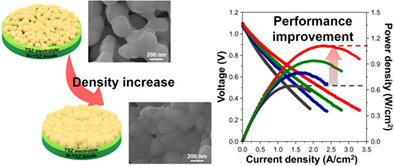
This research investigates a simple and cost-effective process for fabricating highly densified GDC interlayers to develop SOFC with high performance and stability. Additional GDC precursors facilitated grain growth and increased the density of the Gd0.1Ce0.9O2-δ interlayer. Densified GDC interlayer applied cell exhibited a maximum power density of approximately 1.11 W/cm2 at 650°C, 1.74-fold greater than that of a conventional GDC interlayer-based cell.
Single/multi-objective optimization and comparative analysis of liquid-metal heat pipe
- Pages: 17521-17539
- First Published: 27 July 2022
Design of metal-substituted tungsten diboride as an efficient bifunctional electrocatalyst for hydrogen and oxygen evolution
- Pages: 17540-17555
- First Published: 22 July 2022
Revealing the ground-state geometry, optoelectronic, mechanical and thermodynamic behaviors, and efficiency of formamidinium mixed halide perovskites for solar cell applications
- Pages: 17556-17575
- First Published: 22 July 2022
In-situ nano-engineering of amorphous MoS2 nanosheets with carbon dots for enhanced supercapacitor performances
- Pages: 17576-17589
- First Published: 27 July 2022
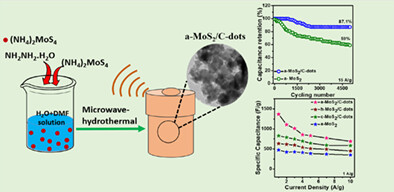
Amorphous MoS2/C-dots are prepared by microwave-assisted- hydrothermal method for energy storage application. The high electrochemical performance of MoS2/C-dots can be attributed to the amorphous MoS2, presence of some 1T phase, and in-situ-nano-engineering of MoS2 with C-dots. The specific capacitance of a-MoS2/C-dots was found to be 1368 F g−1 at 1 A g−1 current density with high cyclic stability.
System level modeling and optimization of high temperature proton exchange membrane electrolyzer system considering recirculated hydrogen as carrier gas
- Pages: 17590-17601
- First Published: 24 July 2022
Catalytic characteristics of titanium-(IV)-isopropoxide (TTIP) on de/re-hydrogenation of wet ball-milled MgH2/Mg
- Pages: 17602-17615
- First Published: 01 August 2022
Effect of ultrasonic field on the performance of an iron-vanadium flow battery with non-aqueous deep eutectic solvent electrolyte
- Pages: 17616-17629
- First Published: 21 June 2022
Highly dispersed single-wall carbon nanotube thin film on WO3 film for ultrafast multi-functional electrochemical devices
- Pages: 17630-17643
- First Published: 26 June 2022
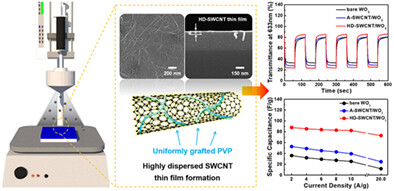
Highly dispersed single-wall carbon nanotube (HD-SWCNT) thin film is introduced on WO3 film using ultrasonic spray coating for ultrafast multi-functional electrochemical devices. Uniform grafting of PVPs onto SWCNT induces amicable debundling and functional groups to accelerate electron and Li-ion transport between electrolyte and WO3 film. Accelerated electron and Li-ion transport into WO3 film are realized by following two main effects of HD-SWCNT thin film: (a) debundled and continuous morphology for high electrical conductivity and (b) amide and carbonyl groups for enhanced Li-ion wettability.
One-pot aprotic solvent-enabled synthesis of superionic Li-argyrodite solid electrolyte
- Pages: 17644-17653
- First Published: 01 July 2022
Density functional theory and ab-initio molecular dynamics calculations on the opto-electronic, spintronic, and energies of pure and TiOx doped monatomic γ-graphyne
- Pages: 17654-17667
- First Published: 01 July 2022
Transition-metal-incorporated molybdenum phosphide nanocatalysts synthesized through post-synthetic transformation for the hydrogen evolution reaction
- Pages: 17668-17681
- First Published: 13 July 2022
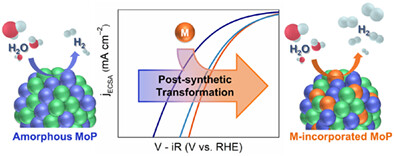
The bimetallic transition metal phosphides were synthesized via a post-synthetic transformation, incorporating new cobalt and nickel cations into the presynthesized amorphous MoP NPs. The Co- and Ni-incorporated MoP NPs preserved their original size and shape, thus the inherent catalytic activity toward HER was directly compared depending on composition. After adding transition metal cations, HER catalytic activity was enhanced due to the modulation of surface electronic structure.
Experimental and theoretical study of combustion efficiency of hydrogen-oxygen mixture at pressure of 0.25 to 6.0 MPa
- Pages: 17682-17692
- First Published: 13 July 2022
Dual interface design of Ga-doped Li7La3Zr2O12/polymer composite electrolyte for solid-state lithium batteries
- Pages: 17693-17705
- First Published: 22 July 2022
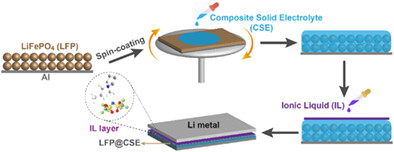
- Interfaces between solid electrolyte and anode/cathode electrodes are addressed. Ga concentration in LGLZO is adjusted to optimize SSLMB performance.
- A spin-coating method is used to fabricate a CSE layer directly on a cathode. An IL interlayer is applied to connect the Li metal electrode and CSE.
- Effects of IL anions on SSLMB properties are investigated.
Photoelectrochemical properties of nanoflake-like cadmium sulfide-sensitized Zn2SnO4 thin film electrodes prepared by chemical methods
- Pages: 17706-17713
- First Published: 18 July 2022
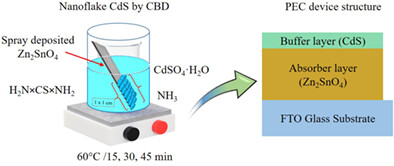
In this work, we fabricate nanoflake-like cadmium sulfide (CdS) sensitized zinc stannate (Zn2SnO4) heterostructure by spray pyrolysis technique and chemical bath deposition. They were investigated for the photoelectrochemical properties. The marginal enhancement of the photocurrent up to 2.2 mA/cm2 is obtained with increasing CdS layer thickness. The stability of the Zn2SnO4-CdS heterojunction is outstanding up to 300 s.
Geometric effect of honeycomb on the performance of the recirculation microbial fuel cells
- Pages: 17714-17719
- First Published: 03 August 2022
Optimized model-based diagnosis approach for hydrogen leakage in hydrogen supply system of fuel cell truck
- Pages: 17720-17725
- First Published: 11 July 2022




